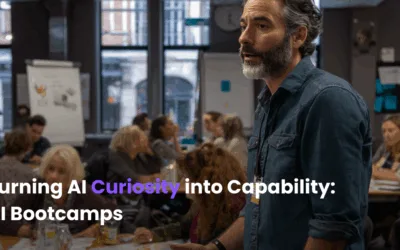We live in an era of information abundance, but this does not mean people are thinking more critically. Indeed AI-generated content has arguably flattened originality and made mediocrity easier to produce.
Critical thinking is often described as an essential skill, but many people mistake exposure to information for the ability to evaluate it. Much of what passes for analysis in traditional education is pattern recognition and rule-following, rather than intellectual challenging of ideas and relevance. And assessment tasks built to identify instances of critical thinking are instead rewarding those who follow those rules.
That’s a problem, because while learners are technically fulfilling the curriculum requirements for critical thinking, they aren’t actually practising it. And the result of that is a workforce that is technically proficient, but often unable to assess ambiguity, challenge prevailing norms, or create entirely new ways of thinking.
Given that AI can synthesise knowledge faster than any human, workers need to develop a skill set to work with AI more effectively. The ability to think critically, challenge assumptions, and go beyond conventional wisdom is a key competitive asset for employees as well as the companies with which they work. Because without those critical analysis capabilities, companies risk becoming trapped in cycles of repetition and incrementalism, unable to differentiate themselves or drive value and growth.
AI and the crisis of originality
AI does not invent; it optimises. It recombines what already exists. So while AI can produce plausible ideas or content, it doesn’t practice edge thinking.
Now that might be fine for some instances of R&D when you want to think about how materials could be combined for a different outcome, or where drug treatments might be used for alternative purposes – these are examples where optimisation may be a valuable technique for generating new products or services. But even in these circumstances, you still need a critical mind to evaluate which combinations are more interesting, or more likely to generate something that truly creates value.
So this is where the crisis of originality comes in. Without the ability to critically assess AI-generated content, even organisations that can benefit from optimisation-oriented innovation, can still fall into incrementalism, where solutions feel new, but they’re not creating that new value.
Innovation should mostly be edge thinking; it should challenge assumptions, test boundaries, and explore ideas that have not yet been validated. So companies that will thrive in an AI-saturated world will be those that can apply critical thinking to innovation, using AI as a tool rather than a crutch. The difference between progress and stagnation will not be access to ideas—it will be the ability to assess, shape, and act on the right ones.
Identifying and fostering critical thinking in business
Organisations need to know how to identify critical thinking, develop it, and embed it into workplace culture. So how do you do that?
We’ve already established that following rules is not always a good idea. Critical thinkers are problem-framers who often seek out contradictions and are comfortable with ambiguity. That doesn’t mean that they are anarchists, but it does mean that they will be curious and adaptive thinkers.
So when trying to identify critical thinking talent, it can be useful to put candidates into unfamiliar situations and to see how they bring their problem exploration skills into the scenario. Critical thinkers will tend to push back on easy answers. A good sign of a critical thinker is that they might ask themselves, “what else?” or “what’s missing?”. And critical thinkers are comfortable with debate, willing to re-examine their own views, and unafraid to engage with complexity rather than oversimplifying challenges.
If you want to foster critical thinking in your organisation, there is inevitably a cost. You need to value analysis over speed. You need to structure projects and workplaces to allow time for questioning assumptions, rather than just aligning on execution. And you need to reward originality over productivity. That’s hard. But it’s necessary, particularly when working with AI. Because having the time to assess ideas will help to derive benefit from AI use, without compromising original, valuable innovation development.
Of course, all this means that both formal and informal education regimes need to move away from assessing critical thinking in a checkbox manner, and to start embedding it in practice-based assessment instead. Again that’s hard. But it should be possible.
To future-proof your business, you have to foster an environment where people do what AI cannot. Organisations that embed critical analysis into their innovation processes will outperform those that rely solely on AI-generated insights. And individuals who develop these skills will be the ones shaping a future that’s both interesting and economically viable.
Want to know more?
Read our article on Creative Problem Solving in the Age of AI.



